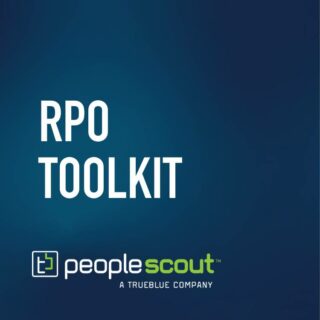In 2010, the then Department of Health and Ageing estimated that the aged care workforce in Australia would need to increase between two and three times before 2050 in order to provide care to the growing number of aged care residents. Other challenges include that the aged care workforce itself is ageing, the overall labour market will be more competitive as a result of the ageing of the population and the sector already faces difficulties in attracting and retaining workers.
The projected growth of the senior population present both opportunities and challenges for healthcare organisations. To meet the rising demand on the healthcare system, it is imperative for healthcare organisations to proactively plan for the future. In this post, we outline the steps organisations can take towards healthcare workforce planning to ensure they are well-equipped to handle the changes and challenges in hiring for healthcare.
The Case for Healthcare Workforce Planning
“A number of reports have pointed out that new models of care are unlikely to work if they are underpinned by old models of health professional training. In addition, new models cannot work if existing health workforces are unwilling to adapt, and while various components do not cooperate and collaborate to work more effectively within teams. Finally, health workforce analysis has concluded that realigning workforce structures must be an essential element of a new health workforce model that needs to include new types of workers and revised roles for existing workers”.
Healthcare organisations that lack a clear healthcare workforce planning strategy may experience an imbalance in staff that can result in an inability to achieve business objectives and hinders the ability to provide adequate care for patients in the face of growing demand.
By developing a healthcare workforce plan that is responsive to hiring needs, healthcare organisations can more effectively manage recruiting and staffing challenges. What’s more, healthcare workforce planning can give organisations an advantage in attracting top medical talent. In turn, helping improve patient care.
Challenges in Healthcare Workforce Planning
With dramatic shifts occurring in the healthcare workforce, the leadership of healthcare organisations needs to identify challenges to their respective organisations and lead the discussion on workforce planning and development. Leaders need to ensure that healthcare workforce planning is a part of comprehensive strategic planning for their organisations, not a far-off solution to future issues not yet manifested.
The American Hospital Association’s Committee on Performance Improvement surveyed healthcare leaders and experts in the field to identify the key workforce challenges highlighted below:
- Rural communities are facing challenges in recruiting healthcare professionals and providing education and training opportunities to current staff.
- Healthcare leaders report facing an inadequate supply of behavioral health professionals to fill roles within their organisations.
- The need for an improved educational pipeline and partnerships between academic and medical institutions need to be strengthened.
- Identifying and harnessing technology to meet future workforce needs.
- Improving commitment to workplace diversity in all aspects — race, ethnicity, gender and age.
While addressing these challenges head-on with healthcare workforce planning is a step in the right direction, healthcare leaders need to also effectively communicate the importance of upcoming changes to their organisation.
Navigating Healthcare Workforce Imbalances
Effective healthcare workforce planning takes imbalances in available talent and resources needed to meet organisational staffing requirements into account, whether those imbalances are due to insufficient financial resources to recruit healthcare professionals or a shortage of qualified candidates to fill positions. To address imbalances, healthcare organisations should conduct an internal review of resources available for recruiting and survey the healthcare talent market for insights.
To properly understand potential imbalances, healthcare organisations should take the following factors into account:
- Traditionally, the unbalanced distribution of the healthcare workforce resulted in greater disparity in available healthcare professionals between rural and urban locations. As the healthcare talent gap widens, urban communities are now seeing similar imbalances between available talent and open positions.
- The availability of healthcare workers and financial resources is influenced by whether a healthcare organisation is public or private. Depending on an organisation’s alignment, they should plan to address limitations and capitalize on advantages respective to their private or public status.
- The government can also influence the healthcare worker talent market by creating laws or establishing public policy to regulate the talent market.
- The healthcare educational system and professional institutions are verdant talent pipelines and also play a role in healthcare imbalance, impacting the number of candidates available.
Once a review has been conducted, healthcare organisations can then draft a plan of action to address challenges in healthcare recruiting.
Defining Workforce Planning Roles and Responsibilities
Before creating a healthcare workforce plan, stakeholders need to identify why a workforce plan is needed and for whom ownership of the planning process belongs. Stakeholders should clearly communicate the intended use of the healthcare workforce plan and its scope; whether it will cover a single service area, a particular patient facility, or an entire nationwide healthcare network.
Once need and scope are established, stakeholders should communicate who will be responsible for ensuring the plan is delivered and who will be involved in the planning process, including senior and executive staff, physicians, HR professionals, community relations and outreach staff and others who may have a role in the plan’s implementation.
Defining the Required Workforce
After establishing roles and responsibilities, healthcare workforce planners must assess their organisation’s hiring needs and what skills and specialised labour are required to fill positions. Workforce planners will also need to determine the number of workers needed to fulfill the healthcare organisation’s workforce demand. In order to estimate workforce demand, planners must consider their existing workforce, turnover rate, current hiring model and average time-to-fill metrics.
Assessing Healthcare Workforce Availability
This step involves surveying the existing healthcare workforce both nationally and regionally, the number of credentialed candidates available to fill positions and assessing issues arising from retirement or turnover. Healthcare workforce planners should consider the practicalities and cost of any retraining, redeployment and/or recruitment activities that could increase or change their organisation’s workforce.
Developing a Plan
A crucial element of healthcare workforce planning is the development of a plan to acquire and retain the necessary number of qualified candidates and employees to fill an organisation’s talent pipeline. To achieve this, workforce planners should identify the specific policies and practices for acquiring, developing, assessing and retaining talent and look for areas of improvement.
While identifying policies and practices, planners should outline specific recommendations and changes they believe will improve workforce planning and share them with leadership for future action. Planners need to take into account the potential effects and outcomes of new policies and practices when making suggestions to ensure that short-term solutions do not mask long-term and reoccurring issues.
Community Partnerships
The role of healthcare providers is changing, and to meet the needs of patients and the communities they serve, each organisation needs to evaluate its role within the community and how they can better partner with local organisations.
Community partnerships are not just outreach vehicles; they can also enhance talent pipeline sustainability and help an organisation’s recruitment efforts. The primary partnerships that should be considered are local universities and community colleges.
In addition to partnering with educational institutions, healthcare organisations should consider partnering with public health departments, social service organisations, law enforcement and community development groups. Developing relationships with both private and public institutions should become a key to any successful healthcare workforce plan.
Monitoring and Refreshing the Healthcare Workforce Plan
After a healthcare workforce plan is implemented, periodic reviews and adjustments are essential for continued success. Workforce planners need to establish a review and monitoring process so they can amend the healthcare workforce plan according to changes in the organisation’s healthcare hiring needs. The plan should be explicit about how success will be measured so stakeholders and leadership can have transparency on the success of the workforce plan. What’s more, a proper monitoring program can help identify any unintended consequences of changes and offer leadership the opportunity to take corrective action if needed.
A well-crafted monitoring program should take into account the future strategic direction of an organisation and how specific successes and failures will affect workforce needs in the future. Assessments are also useful in evaluating the skill sets of current staff, determining the future needs of patients and identifying the actions needed to build partnerships for a steady talent pipeline.
Conclusion
For the success of any healthcare organisation, workforce planners must continually assess the impact of their hiring model, employee retention strategy and talent sourcing methods. Workforce planners should be clear about what they expect to achieve through planning. Their objective should allow the development and maintenance of a health workforce with the skills to support their organisation.




